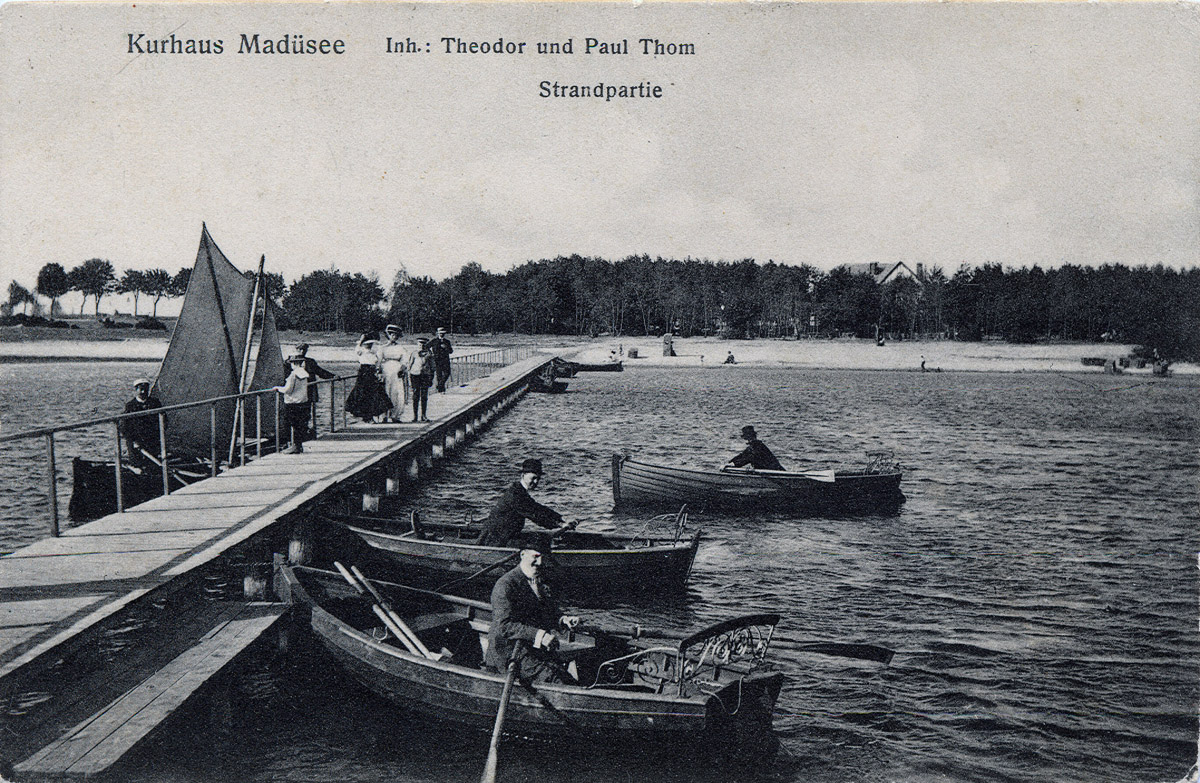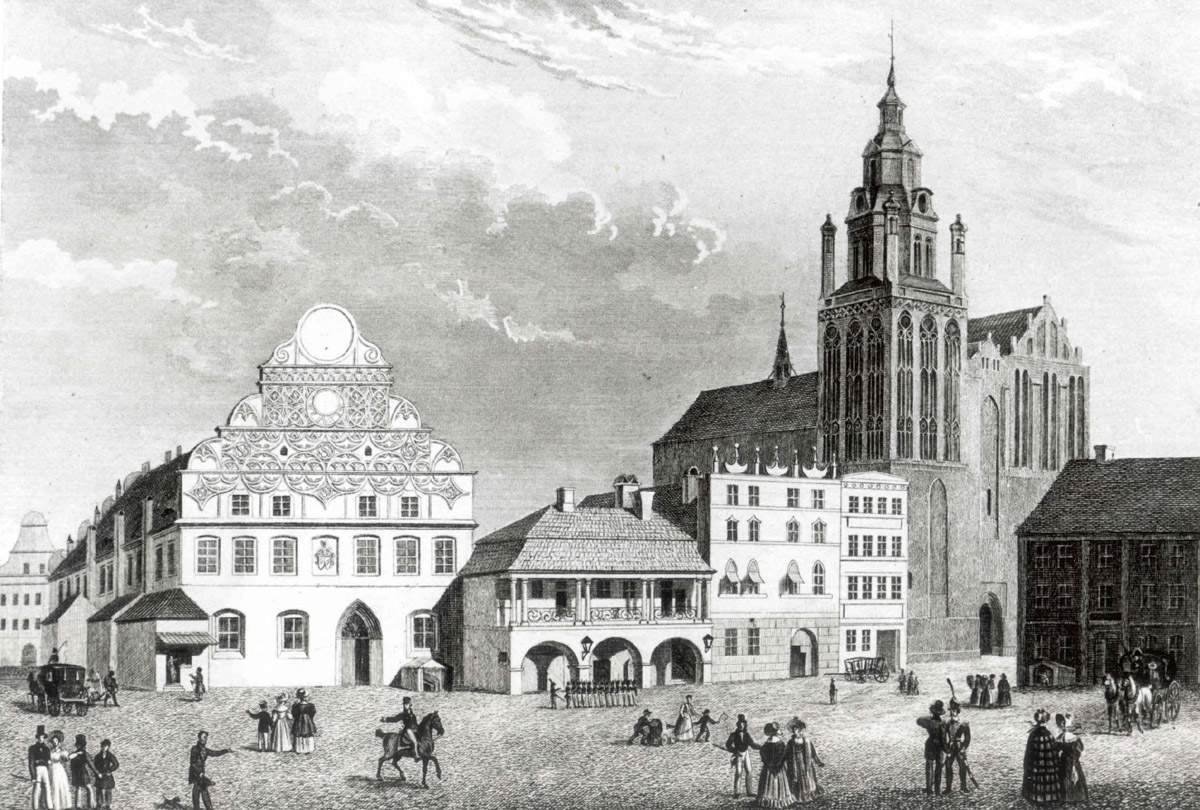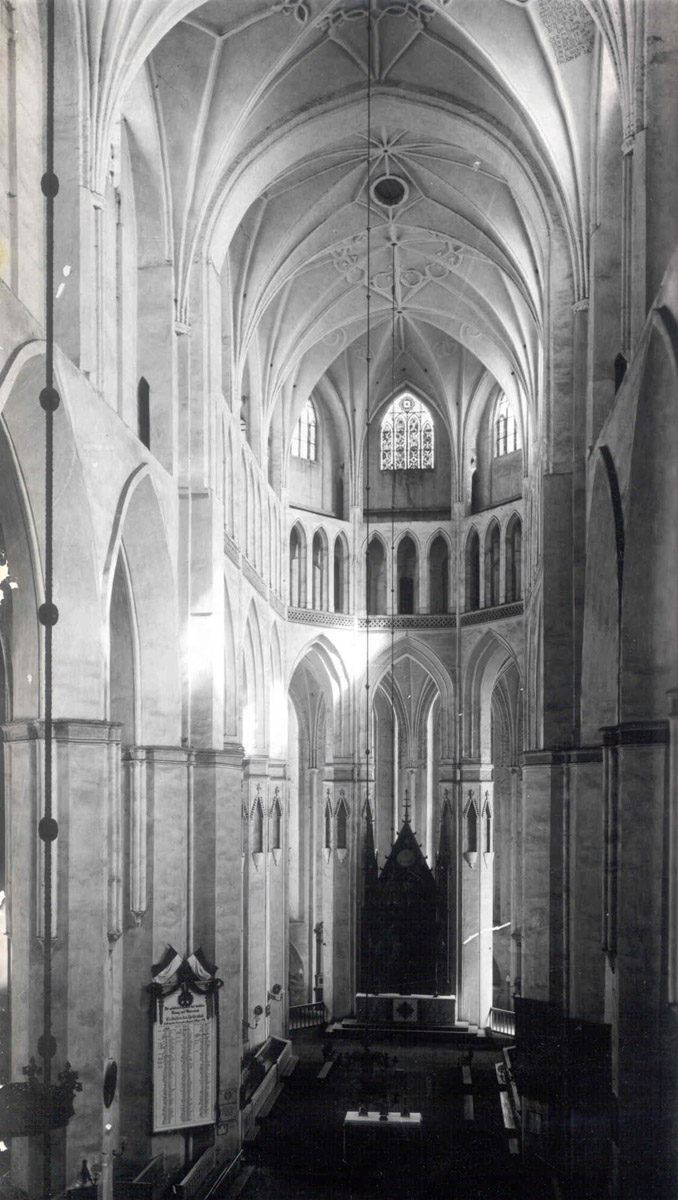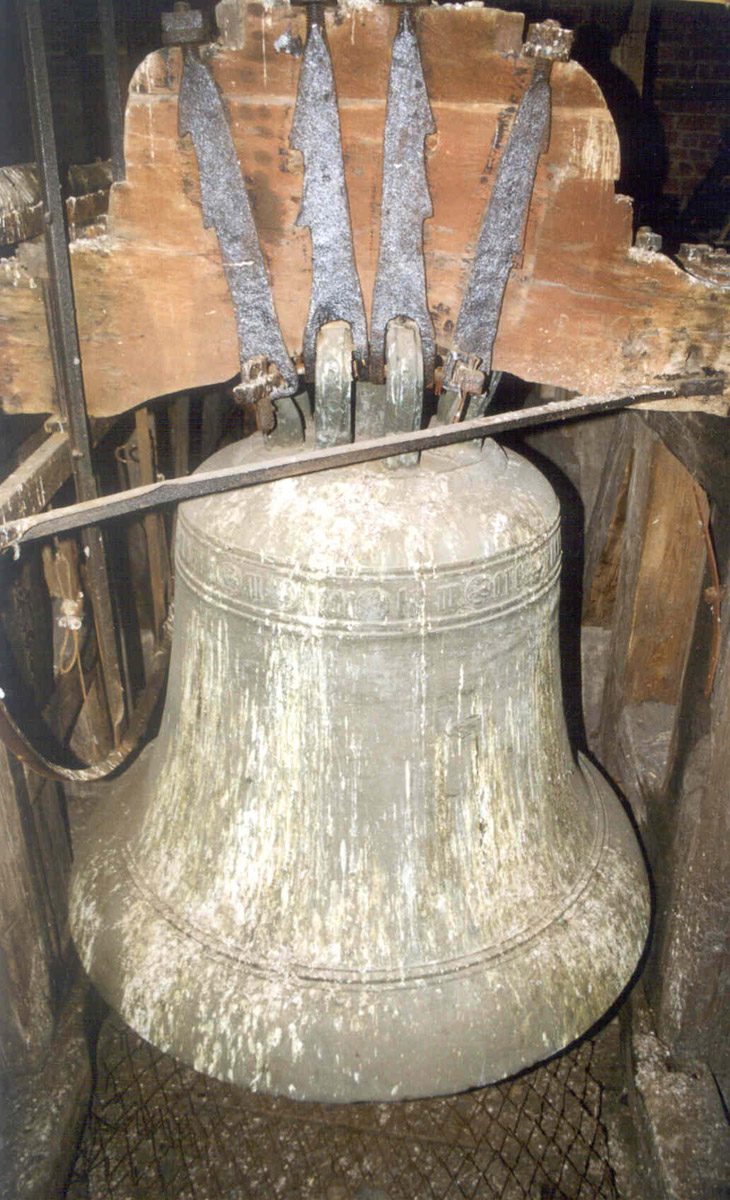CULTURAL TOUR
History
The outside frieze of the map of Pomerania made by Lubinius (a masterpiece of 17th century cartography) shows 49 vignettes of most important towns. At the top of the map, on the left there is Gryfia (Greifswald) and Strzałów (Stralsund); on the right there are Szczecin and Stargard. This shows how important Stargard was in the history of Pomerania.
As early as in the 9th century there was a centre of local tribal power in Stargard-Osetno, one of many which were being established in great numbers at that time in Pomerania. After some time, a new stronghold was set up on an island in the fork of the River Ina. First records that mention its name go back to the beginnings of the 12th century, from the time of Christianisation of Pomerania. The development of the town was given a boost after two monasteries were founded here: Order of St. John (1186) and Order of St. Augustine (1199). In 1243 Barnim I granted Magdeburg charter to Stargard (changed to Lubeck charter in 1292).
Stargard, a town which enjoys centuries-old tradition used to be called the town of churches and towers. Their height was characteristic of our town, which was called “Stargard – the highest”.
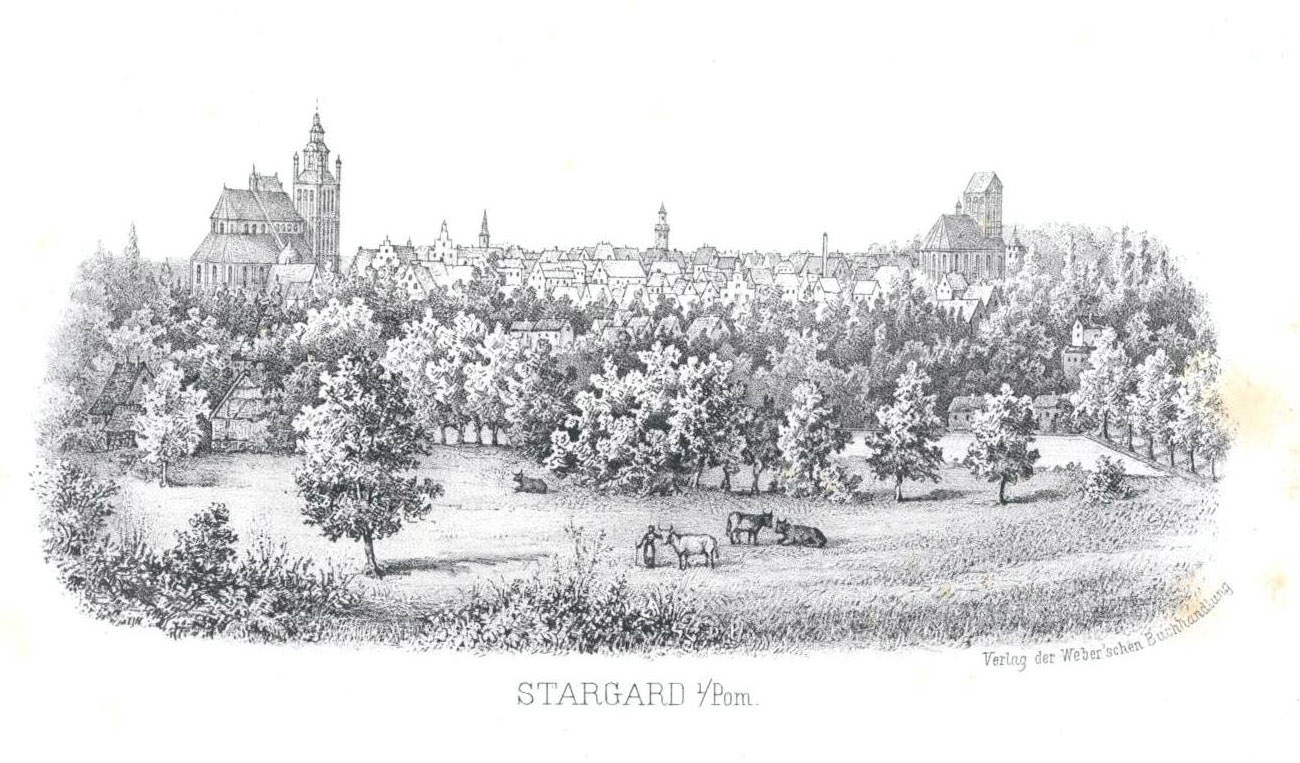
The topographic location of medieval Stargard, in the fork of the River Ina combined with late Gothic architecture and differences in altitude ranging up to twenty meters from the lowest to the highest point dominated the panorama of the town which was once called “Nuremberg of the North”. Residents of Stargard, who were best recognised as robust were called “five-tiers for such strength they have, that as many as five of their equals could they tie.” However, the residents of the town were not only good soldiers, but rich merchants and skilful craftsmen as well.
Stargard, which was a member of the Hanseatic League, was engaged in flourishing trade. The major product exported by the residents of Stargard was grain grown in the area of Pyrzyce. Stargard totally monopolised the market, which resulted in a conflict with Szczecin. An important, if not the primary role, was played by the guild of sailors at that time. They carried goods down the River Ina to the Stargard port in Inoujście and then reloaded the cargo on bigger ships which traded in the Baltic See and the North Sea. The seamen of Stargard took part in a war waged against the Danish king Valdemar III.
Defence structures of Stargard, which are of great historic value, survived till our times. They include not only gates, towers, lookouts and defence walls, but also a system of fortifications with former moats and an armoury. Many times the defence structures saved the town against attacks by neighbours; the walls were used not only for defence purposes, but also as a place where bells were cast. When at the end of the 18th century the defence walls ceased to perform their military function, the command of the garrison made a decision to turn the moats and walls into parks. The area is still a favourite place with residents of Stargard who go here for walks, play and put on interesting open air exhibitions.
Undoubtedly the Mill Gate, also called the Port Gate, is the structure of the greatest historic value. Ever since it was built is has been depicted in the historic coat of arms of the town. It is the only water gate in Poland whose towers are located on two opposite banks of the river.
As in the case of any other town enjoying centuries-old tradition, the Market Square was the heart of the town. Stargard used to have three such places. The Main Market, which is called the Old Market today, performed representative functions as the town hall square but first and foremost it was the venue of annual St. John’s Fair.
It was in this square where the Municipal Scales, Town Council Pharmacy and, since the 18th century, the Guardroom were located. Here lived the wealthiest merchants, clothiers, market traders and furriers. In the course of following centuries it was the place where the most elegant inns and hotels or editorial offices of the first newspapers were located. Other market squares were the Butcher’s Square, today’s Mariacka street, and Fishmonger’s Market, today the area between St. Mary’s Church and the Town Hall.
The artistry of the builders who used the building material characteristic of the southern coast of the Baltic: the brick shows in the architecture of Stargard temples, the prototype of which can be found in early medieval times. The edifice of St. Mary’s Church and St. John’s Church, which were representative of the scenery of the town, marked the way of further development for former architects. Their individual elements or complex structures were copied not only in ecclesiastical architecture, but also in secular one. The influence of the forms of décor of St. Mary’s Church can be found as far away as on Danish islands.
The interior of the church, the cubic area of which is 53 thousand m3, filled contemporaries with awe and amazement because of its grandeur and greatness. Philipp Hainhofer, a townsman of Augsburg attempted to describe it with naïve simplicity in his chronicle saying, “so high a vaulting that one of similar height might I have never seen.”
The interiors of temples, of which there were plenty in Stargard, were embellished over centuries thanks to the generosity of not only burgers and clergy, but also Pomeranian dukes and the nobility. Lavish ornaments and furnishings collected for hundreds of years were destroyed by the great fire of Stargard in 1635. The aforementioned chronicler so described one of such furnishings, ‘behind the altar stands a clock and a mechanism which makes the bells toll with a globe and planets going round.”
Centuries ago Stargard was also known for making works of art, mainly by woodcarvers, goldsmiths, pewterers, and bell founders. Cups, candle holders, bells, pulpits and altars made by the artists of Stargard decorated the interiors of churches not only in Stargard, but also other churches of the Great Pomerania. Bellfounders received orders for bells from Pomeranian dukes, the nobility, burghers and country communes. The bells tolled for the believers in Pomerania, Poland and Brandenburg. The oldest bell that survived down to our times was St. Mary’s Bell in St. John’s Church founded in 1464; it weighs about 3500 kg.
Families of goldsmiths worked for Szczecin market; their products were characterised by intricate decorations whose forms varied according to fashion and preferences in a given period.
Out of all virtues the residents of Stargard valued law-abidingness and justice the most. The proofs for abiding law were given many times, although sometimes in excess. In the 16th century ‘some local Mayor, in order to serve justice had his own son beheaded for a crime.’ At the beginning of the 16th century Stargard still had a ‘perfect’ torture chamber as well as gallows and a scaffold in the meadows on the River Ina. In 1772 the so called Dessau trough, also known as Stargard’s wardrobe, was used for the last time in Europe while interrogating prisoners. Apart from state and municipal law, local common law was also in force and effect. Punishment was inflicted with a wooden bat, hung for public use in Pyrzycka Gate. It was used for beating reckless parents who “gave their estate away to children when they were young and scraped along in old age.”
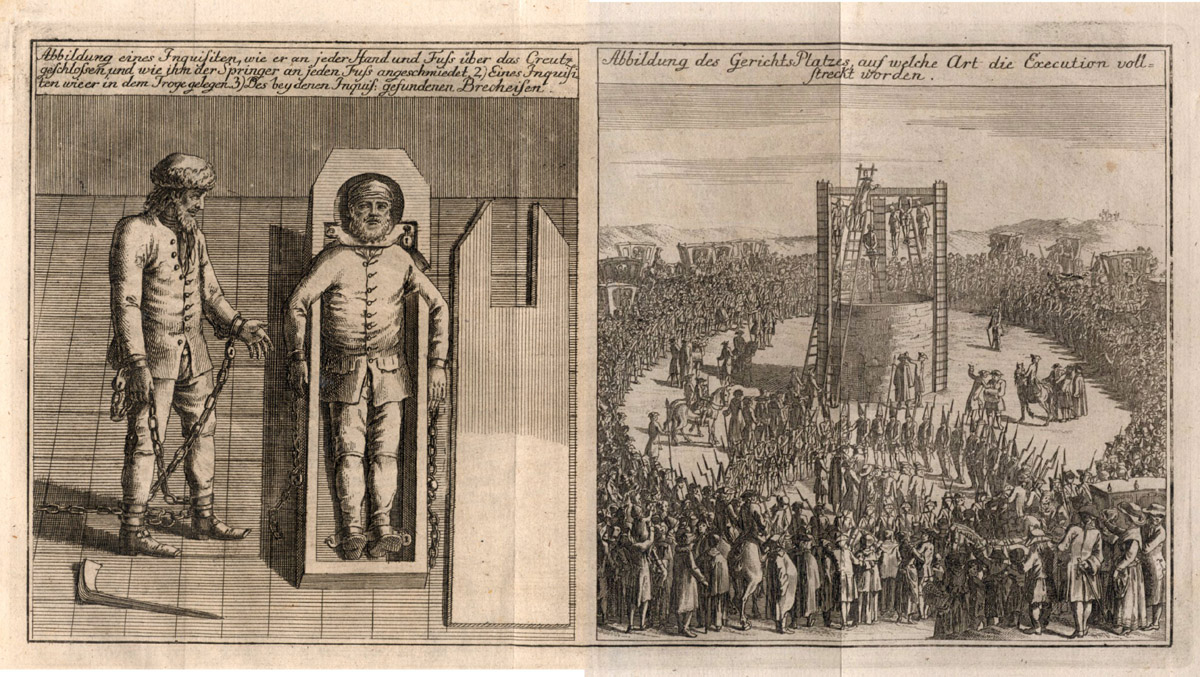
The beauty of Stargard in the past was emphasised in particular by painters, drawers and photographers in the 19th and the first half of the 20th century. Historians of art and architecture who presented their dissertations on works created in Stargard in previous centuries spared no words in praising the quaint and charming corners of the town. It was in Stargard that the career of such artists as the greatest painter of Szczecin August Ludwig Most (1807-1883) and Otto Nicolai (1810-1849), the author of a popular comic opera: “The Merry Wives of Windsor”, started. A notable art historian: Franz Kugler left a collection of drawings the major theme of which was Stargard, while Wilhelm Herwarth, a painter from Berlin, was particularly fond of idyllic scenes from the lives of the residents of Stargard showed against a backdrop of the best known edifices of historic Stargard. The town, which depended crucially on the River Ina, used the river not only for economic and transport purposes, but also for leisure. In the 19th century residents enjoyed spending their leisure time on a boat, beach or in municipal wood.

